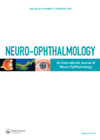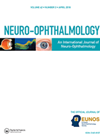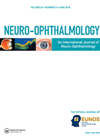
Journal Reviews
A rare case of oculomotor nerve palsy from presumed cavernous angioma
Cavernous angiomas of the cranial nerves are extremely rare, and those of the oculomotor (third) nerve are rarer still. The authors present a single case study of presumed cavernous angioma involving the subarachnoid portion of the left third nerve, which...
Aberrant regeneration rates following traumatic oculomotor palsy
Traumatic oculomotor nerve palsies can result in aberrant regeneration / synkinesis which impairs normal facial function. In this paper, the authors retrospectively reviewed the records of 16 patients with traumatic oculomotor nerve palsies who were treated with or without steroids....
An unusual third nerve palsy case report
The authors present the unusual case of a 23-year-old male presenting to hospital with right eye pain, right upper eyelid ptosis, blurred vision and diplopia, developing immediately after a penetrating injury to his right upper eyelid. On assessment he was...
An unusual case of partial oculomotor nerve palsy
The authors present an unusual case of intra-axial oculomotor nerve involvement due to midbrain infarction. The 65-year-old male patient presented with unilateral complete blepharoptosis and slight limitation of upgaze. Neurological examination revealed a complete ptosis of the left eyelid, slight...
A case report of bidirectional aberrant upward eye movement
The authors present a case report of a 14-year-old boy with left ptosis and strabismus since childhood. In primary position he had left hypotropia with ptosis. On elevation of the right eye, the left eye depresses and adducts. Conversely, on...
Literature review of isolated ocular motor nerve palsies
Patients aged over 50 presenting with isolated nerve palsies of the third (pupil sparring), fourth or sixth nerves, are often described as having microvascular extraocular palsies. This review looks critically at the evidence surrounding these microvascular non-arteritic extraocular palsies and...








